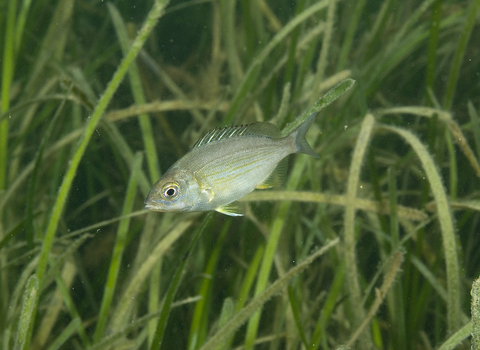
Black sea bream ©Paul Naylor www.marinephoto.co.uk
Black sea bream
The black sea bream really is a fascinating fish. From sex changes to nest building, this fish is full of surprises!
Enw gwyddonol
Spondyliosoma cantharusPryd i'w gweld
January to DecemberTop facts
Stats
Length: Usually 35-40cmConsidered of Least Concern on the IUCN Red List of species.
Ynghylch
The black sea bream, also known as a Porgy, is an omnivorous fish, eating seaweeds and small invertebrates.They are a warmer water species and found mainly around the south and west coasts of the UK. Black sea bream breed in UK seas between April and May. During the breeding season, the males change colour, becoming darker with vertical white bars. The females have a long horizontal white bar on their body when ready to lay her eggs. The males excavate a small shallow in the seabed, moving the gravel or sand around the edge to create a sort of crater into which the female lays her eggs. The male then protects the eggs until they hatch. He will fan them with his tail to keep them clear of sand or debris and wards off hungry predators, including smaller bream, wrasse and even whelks!
What to look for
A large silvery fish, with an oval shape. Shaded bands running along the length of the upper flanks. It has a long single dorsal and anal fin and a small mouth. The tail is large and forked displaying a black band on it, most obviously noticeable on juveniles.Juveniles usually have numerous broken yellow stripes running along the body.
Spawning males are nearly completely black in colour, except for vertical white bars.
